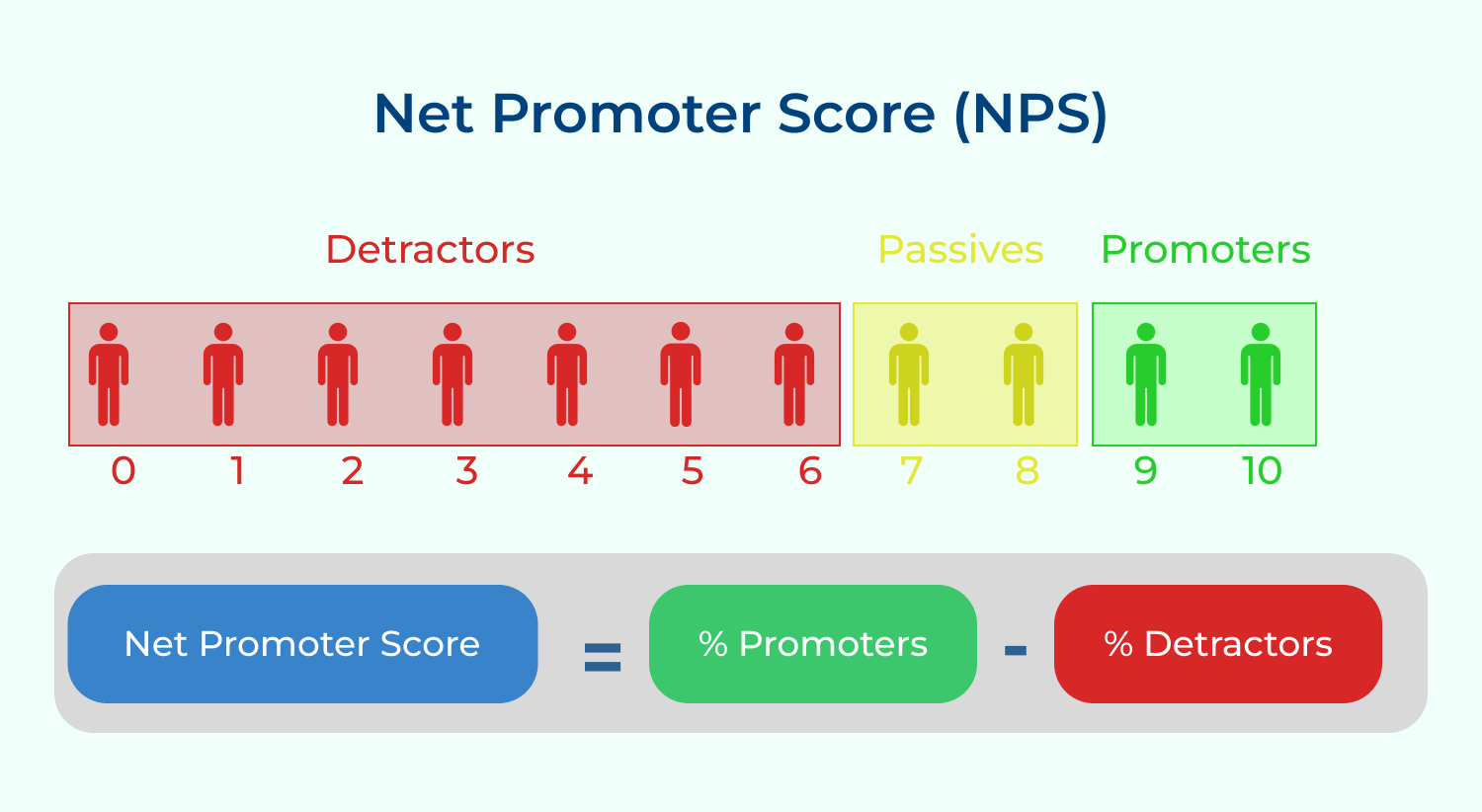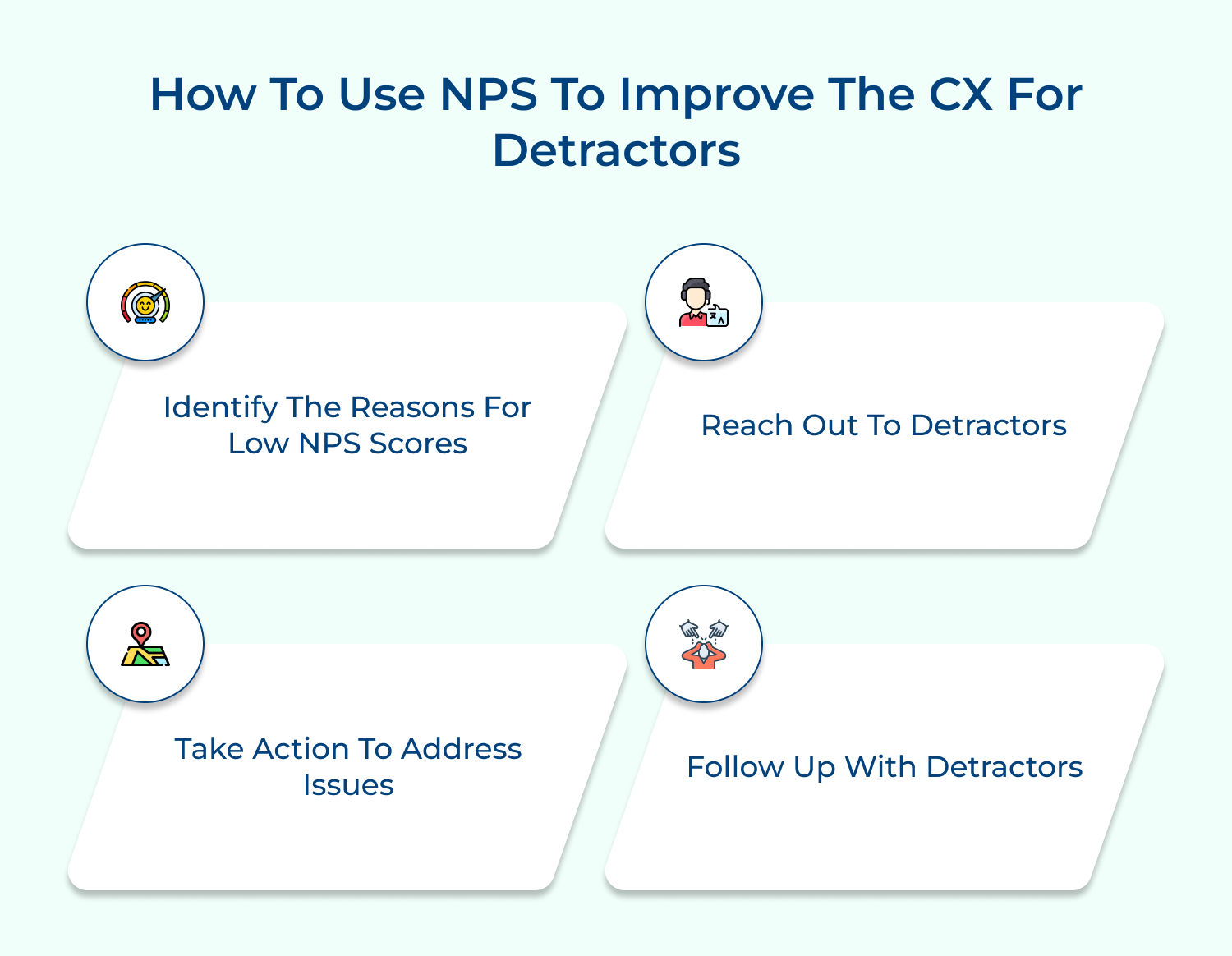Net Promoter Score or NPS acts as a tool used by companies to measure customer loyalty and satisfaction. It is based on the premise that customers can be divided into three categories: Promoters, Passives and Detractors.
- Promoters are loyal customers who are likely to recommend a company to others.
- Passives are satisfied but unenthusiastic customers.
- Detractors are unhappy customers who are likely to spread negative word-of-mouth.
Calculating NPS is a straightforward process that involves asking customers a single question: “On a scale of 0-10, how likely are you to recommend our company to a friend or colleague?” Based on their responses, customers are categorized into the three groups mentioned above.
To calculate NPS, you first need to determine the percentage of responses in each category.
- Promoters are those who rate the company a 9 or 10,
- Passives rate the company a 7 or 8, and
- Detractors rate the company a 0-6.
Next, subtract the percentage of Detractors from the percentage of Promoters. It will give you a score between -100 and 100, with a higher score indicating higher customer satisfaction.
For example, if 70% of responses are Promoters, 15% are Passives and 15% are Detractors, the NPS would be 55 (70%-15%=55).
Importance of NPS in Measuring Customer Experience
Tracking NPS scores help businesses to identify areas for growth. The importance of NPS in measuring customer experience cannot be overstated.











